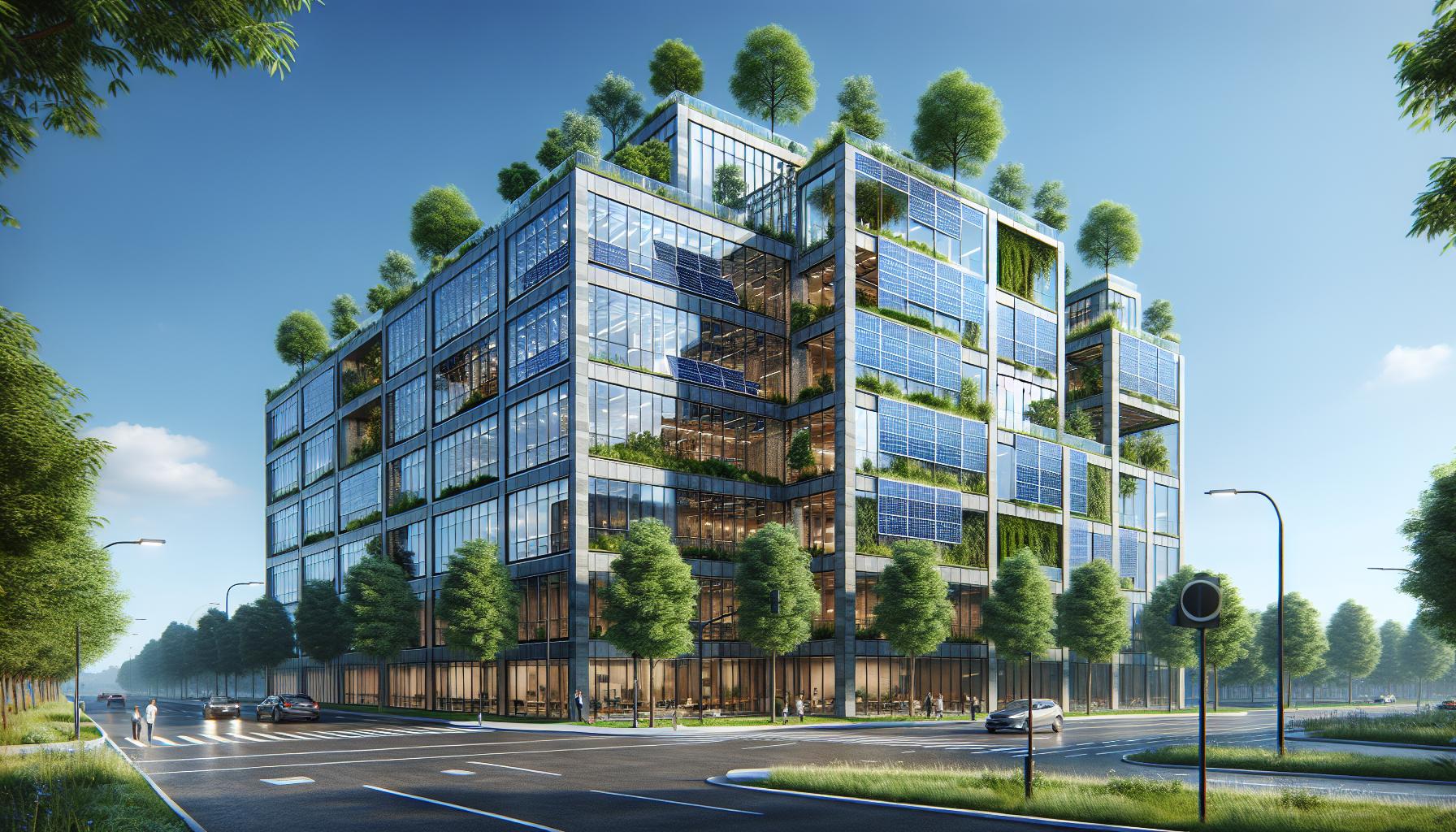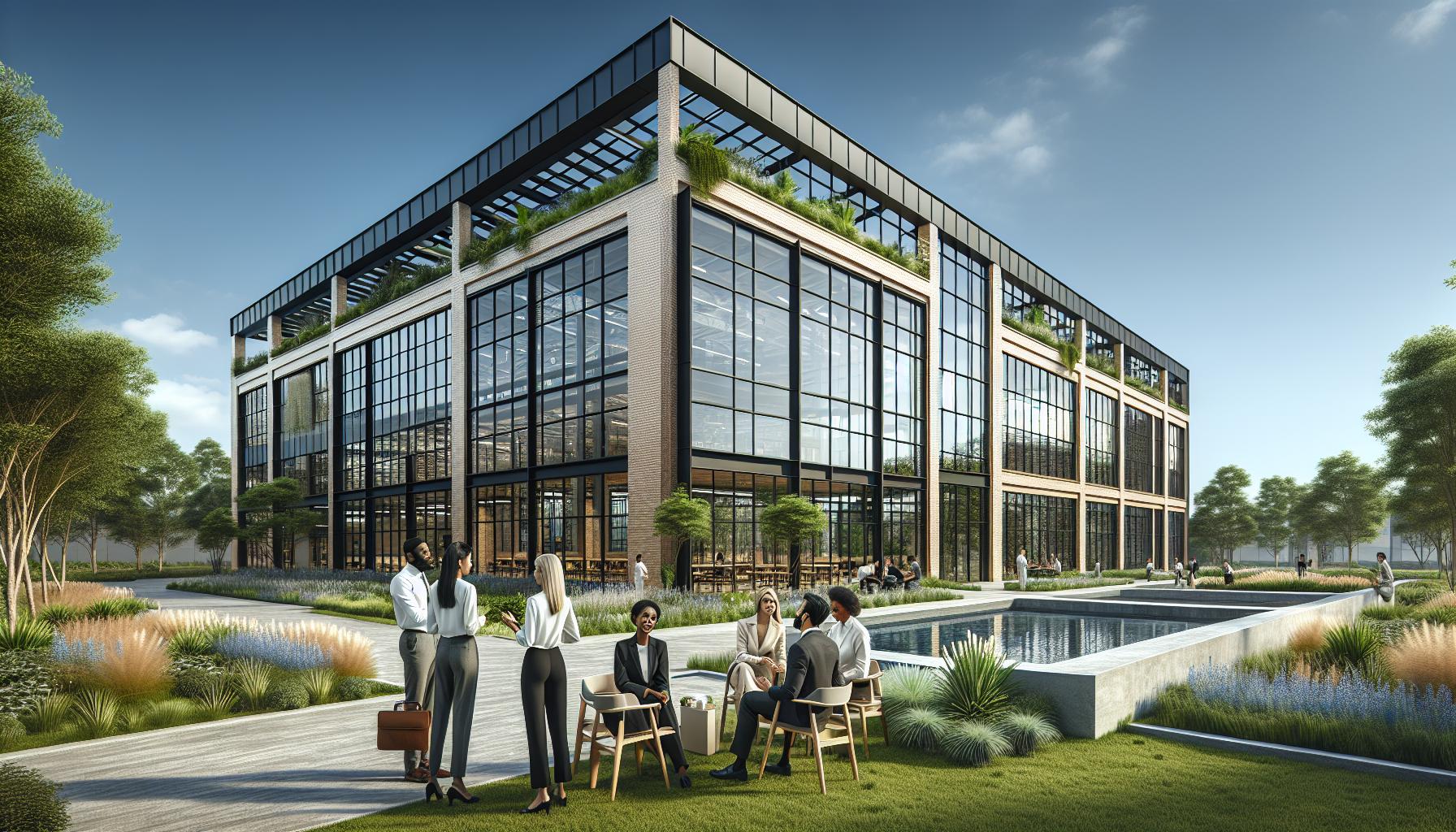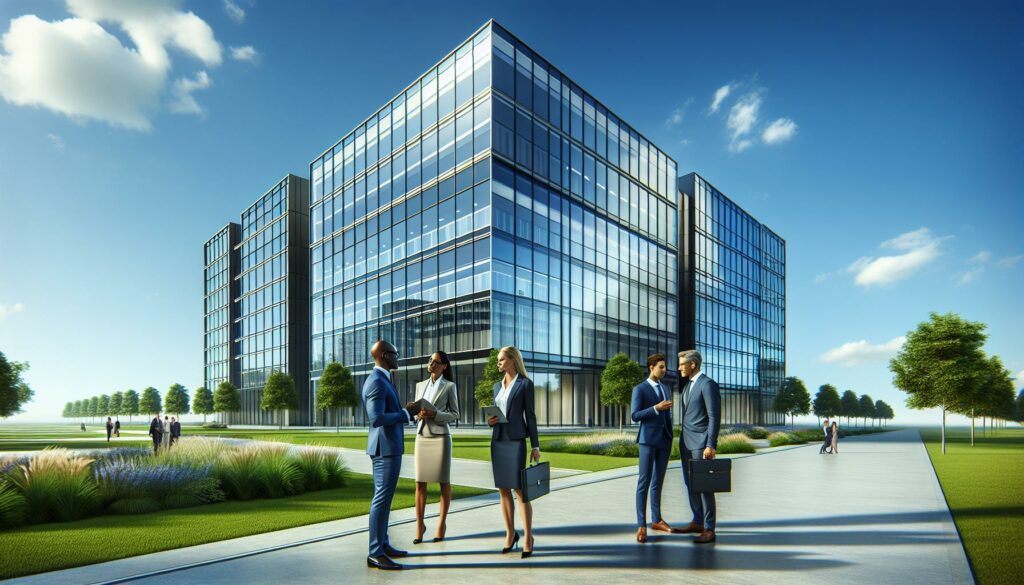In the bustling world of business, first impressions matter. A sleek, well-designed commercial building can be the difference between a client walking through the door or just scrolling past on their phone. Imagine a structure that not only serves its purpose but also turns heads and sparks conversations. That’s the magic of commercial building architectural design.
It’s not just about aesthetics; it’s about creating spaces that inspire productivity and innovation. From the layout to the materials used, every choice impacts how a building functions and feels. So why settle for drab and dreary when you can have something that makes people stop and say, “Wow!”? Dive into the world of commercial architecture, where creativity meets functionality, and discover how the right design can elevate a business to new heights.
Commercial Building Architectural Design
Commercial building architectural design focuses on creating functional, efficient, and aesthetically pleasing structures tailored to meet business needs. An architect considers various factors during the design process, including client objectives, zoning regulations, environmental impact, and space utilization. These considerations ensure that the building aligns with its intended purpose while adhering to legal and safety requirements.
Design elements play a crucial role in shaping a commercial building’s identity and functionality. Color schemes, materials, and layout contribute to both the exterior and interior experience. Incorporating sustainable practices enhances energy efficiency and reduces operational costs, supporting long-term business viability.
Collaboration among stakeholders, including clients, engineers, and contractors, is essential. Each party contributes unique perspectives that enrich the design process and lead to innovative solutions. Effective communication streamlines decision-making and addresses challenges that arise.
Safety and accessibility remain priorities. Architectural designs must comply with the Americans with Disabilities Act, ensuring spaces are navigable for all users. Incorporating appropriate exits, fire safety measures, and structural integrity fortifies overall safety.
Incorporating technology into design also shapes modern commercial buildings. Smart building systems improve energy management, provide real-time analytics, and enhance tenant comfort. These advancements showcase how architecture continues to evolve and adapt to contemporary needs.
Overall, successful commercial architectural design harmonizes creativity and practicality. It reflects the brand identity while promoting an environment conducive to productivity and collaboration, ultimately contributing to a business’s success.
Key Principles of Architectural Design

Architectural design must prioritize both functionality and aesthetics to create successful commercial buildings. Understanding the core principles enhances a design’s effectiveness and appeal.
Functionality and Efficiency
Functionality drives the design process, ensuring spaces meet user needs. An architect considers workflow, flexibility, and space utilization to maximize efficiency. Incorporating durable materials and smart layouts creates a seamless experience for occupants. For example, open floor plans foster collaboration, while dedicated areas support focused work. Efficient designs also emphasize energy performance, lowering operational costs and minimizing environmental impact. This aspect influences the selection of sustainable materials and innovative technologies. Prioritizing functionality leads to spaces that adapt and evolve alongside organizational growth.
Aesthetic Appeal
Aesthetic appeal shapes a building’s first impression and influences brand perception. Colors, textures, and architectural elements harmonize to create visually striking facades. Choosing appropriate styles reflects the client’s identity and resonates with target audiences. Unique design features, such as focal points or landscaping, enhance the overall visual package. Lighting plays a crucial role, both inside and outside a building, fostering welcoming atmospheres. Furthermore, integrating local culture into the design promotes community connection. Ultimately, aesthetic considerations contribute to the building’s overall attractiveness and marketing potential.
Sustainable Practices in Design

Sustainable practices in commercial building architectural design promote environmental responsibility and resource efficiency. These strategies play a critical role in shaping modern architectures.
Energy Efficiency
Energy efficiency stands at the forefront of sustainable design. Incorporating advanced insulation techniques reduces heating and cooling needs. Utilizing energy-efficient lighting lowers electricity consumption and costs. Incorporating renewable energy sources, like solar panels, further enhances sustainability. Smart building technologies monitor and control energy use effectively, optimizing energy consumption patterns. Architects prioritize natural lighting, which also improves indoor air quality. Adopting these measures significantly diminishes the building’s carbon footprint.
Use of Eco-Friendly Materials
Using eco-friendly materials contributes to sustainability in commercial design. Selecting recycled or sustainably sourced materials minimizes environmental impact. Non-toxic paints and finishes improve occupant health and well-being. Furthermore, integrating sustainable wood alternatives like bamboo fosters a commitment to responsible forestry. Utilizing low-VOC (volatile organic compound) products enhances air quality. Innovative materials, such as permeable concrete, manage stormwater and reduce runoff effectively. By embracing these choices, architects create healthier, more sustainable buildings.
Innovations in Commercial Architecture

Innovative approaches redefine commercial architecture, blending technology and creativity to enhance functionality and sustainability. Architects increasingly adopt advanced tools and materials, driving transformative changes in design.
Smart Building Technologies
Smart building technologies revolutionize how commercial spaces operate. These systems use sensors and automation to optimize energy use and improve occupant comfort. For instance, smart thermostats adjust temperatures based on occupancy patterns. Moreover, integrated lighting systems respond to natural light levels, reducing electricity consumption. Enhanced data analytics provide insights into building performance, allowing for continuous improvements. As these technologies evolve, they contribute significantly to sustainability agendas while ensuring a responsive design that meets modern business needs.
Adaptive Reuse of Structures
Adaptive reuse of structures promotes sustainability by repurposing existing buildings for new functions. This approach minimizes waste and preserves historical architecture, creating unique and character-rich spaces. For example, former factories transform into vibrant office hubs or mixed-use developments. Incorporating modern amenities in these renovated spaces enhances functionality without altering their original charm. Adopting this strategy not only saves resources but also fosters community engagement, breathing new life into underutilized areas while addressing contemporary demands.
Case Studies of Notable Designs
Examining notable commercial building designs reveals how architecture influences business environments. These case studies showcase innovative approaches and impactful results.
Iconic Commercial Buildings
One example is the One World Trade Center in New York City. This skyscraper stands as a symbol of resilience and architectural excellence. Another significant structure is the Sydney Opera House, recognized for its unique sail-like design that captivates visitors. The Burj Khalifa in Dubai exemplifies engineering prowess, holding the title of the tallest building in the world. Each of these buildings combines functionality with aesthetic appeal, enhancing their respective cities’ skylines while serving practical purposes.
Lessons Learned from Each Case
Designing commercial buildings requires balancing innovation with practicality. The One World Trade Center emphasizes security without sacrificing aesthetics. The Sydney Opera House teaches the importance of community engagement in design, facilitating cultural events. In the case of the Burj Khalifa, efficient vertical space utilization demonstrates how to maximize limited ground area. Each building provides valuable insights into effective design strategies, highlighting unique considerations like environmental impact, user experience, and branding. Understanding these lessons enables architects to create inspiring and functional spaces for future developments.
Future of Architectural Design
The impact of commercial building architectural design extends far beyond aesthetics. It shapes business identity and influences client perceptions while fostering a productive environment. By prioritizing functionality and sustainability, architects can create spaces that not only meet immediate needs but also adapt to future demands.
Innovative technologies and collaborative approaches are essential in modern design, ensuring that buildings remain efficient and comfortable. As businesses evolve, so too must their environments, driving the need for thoughtful architectural solutions. Embracing these principles will lead to successful designs that resonate with both occupants and the community, ultimately supporting long-term business growth.



